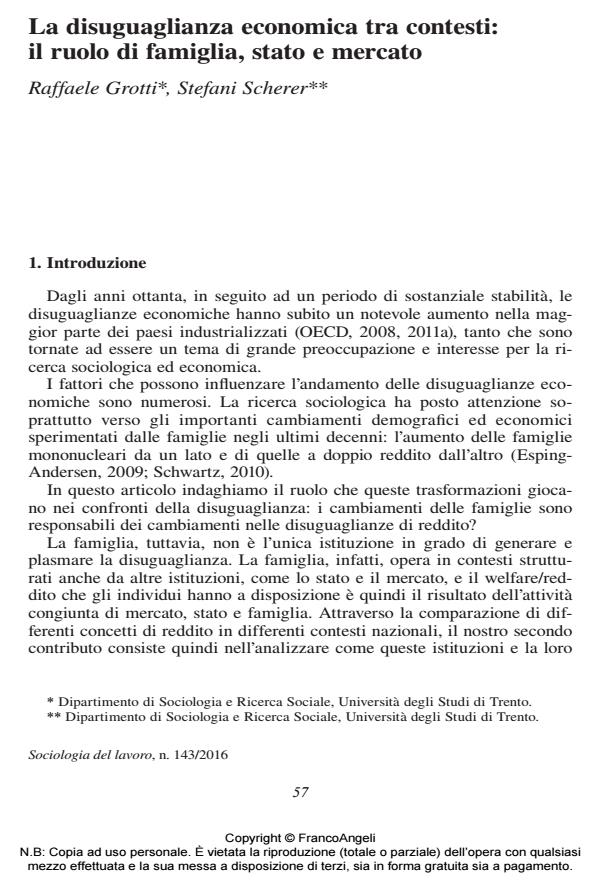Economic inequality in context: the role of the family, state and market
Journal title SOCIOLOGIA DEL LAVORO
Author/s Raffaele Grotti, Stefani Scherer
Publishing Year 2016 Issue 2016/143
Language Italian Pages 19 P. 57-75 File size 153 KB
DOI 10.3280/SL2016-143004
DOI is like a bar code for intellectual property: to have more infomation
click here
Below, you can see the article first page
If you want to buy this article in PDF format, you can do it, following the instructions to buy download credits

FrancoAngeli is member of Publishers International Linking Association, Inc (PILA), a not-for-profit association which run the CrossRef service enabling links to and from online scholarly content.
Over the last decades, many industrialized countries experienced a rise in economic inequality and important changes in families, comprising demographic (the increase of singles) and economic (the growth of female employment) aspects. This comparative paper studies to what extent institutions - family, state and market - shape inequality by (re)redistributing income between families and whether changes in the family are responsible for increased economic inequality. Empirical analyses focus on five countries (Denmark, Germany, Italy, the United Kingdom and United States) belonging to different welfare state regimes, from the mid-’80s to the mid-’2000s. The paper shows that institutions play an important role for inequality, and individuals’ and families’ economic well-being, although with important variations between regimes. However, family changes did not drive inequality in disposable household income.
Keywords: Family, institutions, economic inequality, welfare state regimes
Raffaele Grotti, Stefani Scherer, La disuguaglianza economica tra contesti: il ruolo di famiglia, stato e mercato in "SOCIOLOGIA DEL LAVORO " 143/2016, pp 57-75, DOI: 10.3280/SL2016-143004